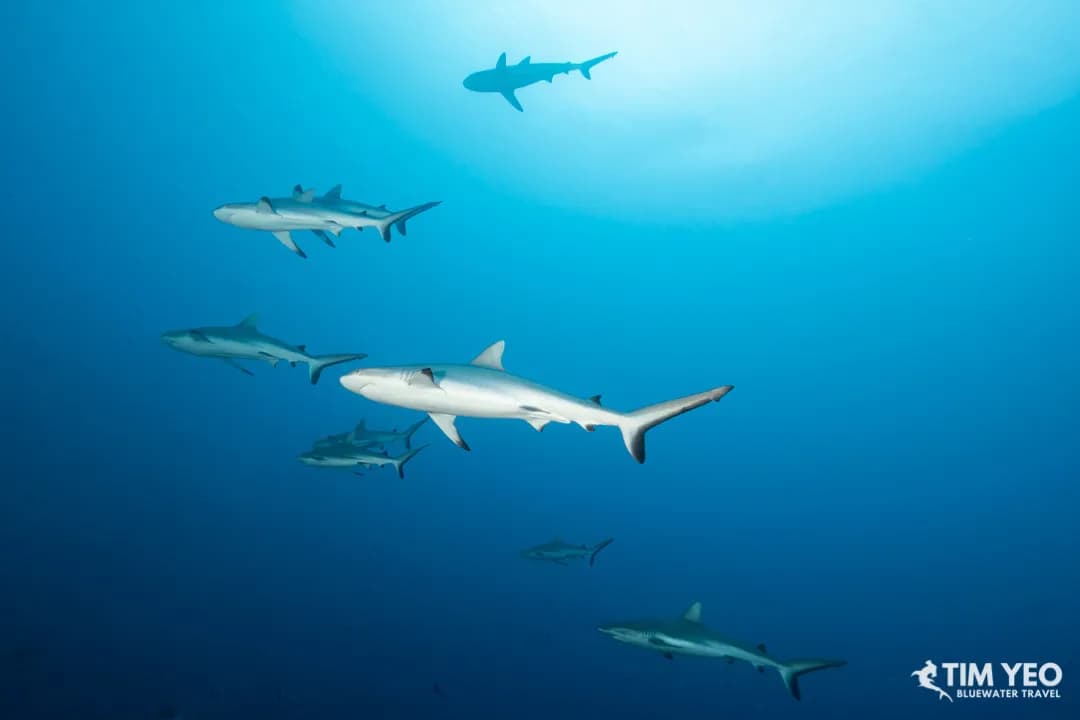We Know Because We Go! | Book with a 5-Star Team,| Trusted by 10,000+ Divers
Best Scuba Diving in Fakarava
Fakarava is the second largest atoll in French Polynesia, one of the best diving destinations in the world. A part of seven atolls classified as a UNESCO Biosphere Reserve, Fakarava is known for its rich marine diversity, making an undersea Garden of Eden.

Destination Highlights
Average flight time from LAX
11
Scuba Dive Level
Advanced Diver
Visibility
32 to 100 feet (10 to 30 meters)
Average Water Temperature
80
Pelagic Encounters
Shark Encounters
Scuba Diving In Fakarava
Fakarava Diving Highlights
Fakarava is the second largest atoll in French Polynesia, one of the top dive destinations in the world. A part of seven atolls classified as a UNESCO Biosphere Reserve, Fakarava is known for its rich marine diversity, making an undersea Garden of Eden. Divers from all over the world travel to Fakarava to enjoy its world-class diving experiences, complete with beautiful corals, drift dives and amazing pelagic encounters. Alongside Rangiroa, it boasts some of the world's best shark dives and the shark diving is very diverse. Some of the sharks species scuba divers can see there are grey reef, lemon sharks, blacktip and whitetip sharks. There are also many schools of fish, barracuda, and eagle rays.
Intro To Fakarava
Located in the Tuamotu Islands, Fakarava measures 60km long and 21km wide. Its inner lagoon is the perfect place to encounter pelagic species in numbers as they have access to the plankton growing inside through the natural gates:Garuae Pass in the north and the Tumakohua Pass in the south. Though less popular than its neighboring atoll Rangiroa, Fakarava is still considered one of the ultimate shark experiences. This makes it an attractive dive location for those who wish to stay away from the crowds.
Diving Information
Fakarava Marine Life & Photography Subjects
Hundreds of sharks, thousands of groupers, and countless other fish can sum up Fakarava diving. Here is a list of some of the marine animals you can spot during your dives in Fakarava.
- Parrotfish
- Turtles
- Eagle Rays
- Tuna
- Groupers
- Hammerhead sharks
- Lemon Shark
- Whitetip shark
- Blacktip shark
- Grey reef shark
- Damselfish
- Surgeonfish
- Fusiliers
Best Dive Areas
In this UNESCO Biosphere Reserve, two notable passes that feed into the lagoon. The biggest and most famous is the Garuae Pass, located on the north of Fakarava. Located on the south of Fakarava is the second famous pass, the Tumakohua Pass. For a firsthand account of this incredible event, read our Fakarava Grouper Spawning Trip Recap.
The Garuae Pass - The Garuae Pass is the widest navigable pass in French Polynesia. The pass offers various diving options.Great topography, rich in marine life, and fun drift diving is all there. Large schools of fish are often spotted during dives. The width of the pass is truly impressive, and divers can barely see both sides at once. Scuba divers can see more sharks they can count. There are also a lot of groupers, parrotfish, and wrasses in the area. Lastly, beautiful pristine reefs of hard corals make up a gorgeous sight.
The Tumakohua Pass - In Tumakohua Pass lies a narrow underwater valley known as Shark's Hole. It is home to large populations of lemon sharks, whitecap, and hammerhead sharks. Shark encounters are pretty much guaranteed here. It is known for a wall of sharks, which attracts divers all around. Scuba divers can swim through a beautiful coral garden to squirrelfish, damselfish, snappers, and many other reef fish. The Tumakohua pass is also great for drift diving, gently carrying the divers along with its beautiful underwater scenery.
Diving Conditions
- Water temperature: On average, the water temperature in Fakarava ranges from 29C/84F in the summer and 26C/79F in the winter.
- Visibility: Visibility is excellent, averaging 10-30m/32-98ft.
- Diving Difficulty: There are dive sites suitable for all levels
Best Time to Dive Fakarava
Diving is available year-round in Fakarava. However, during the dry season (June to September) the seas may be rougher, and during the wet season (November to April) the cloudy weather and rain can lead to the cancellation of some excursions to the lagoon. Sharks are there all year round. The grouper spawning in the summer months of June and July attracts the most sharks.
How To Get There
The easiest way is to fly to Fakarava is by flying to Faaa International (PPT) on Tahiti or to the Rangiroa Airport (RGI). From there, it is a 70-minute and 30-minute flight, respectively, to Fakarava.
How To Dive Fakarava
There are a lot of dive resorts and tour operators in Fakarava, such as Tetamanu Village Et Sauvage and TOPDIVE French Polynesia just to name a few. Liveaboards are also available. The French Polynesian islands are also great for island hopping and you can visit the other islands like Moorea, Rangriroa and Bora Bora for great diving.
Topside & Non-Diving Activities
- Blue Lagoon Excursion
- Beach Picnic
- Boat Tours
- Water Sports
- Sightseeing
- Pearl farms
- Shopping in markets across the islands
- Various tours & excursions
Practical Information
- Currency: French Pacific Franc
- Language: The official language is French but you can expect English to be spoken in some tourist destinations.
- Main Airport Code: PPT
- Time Zone: UTC-10
- Electricity: 220 V 60 Hz